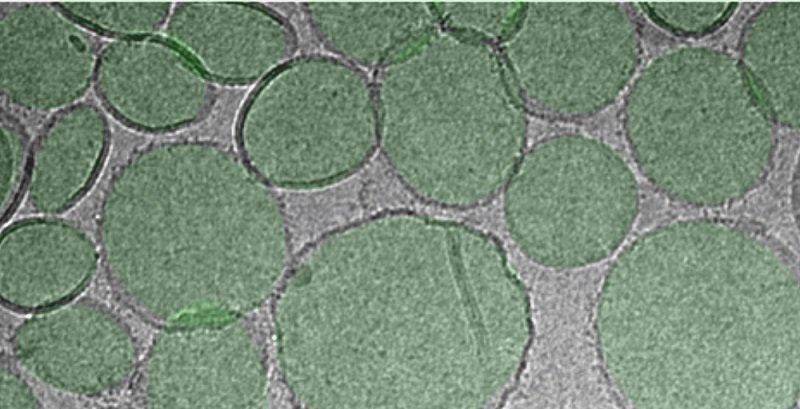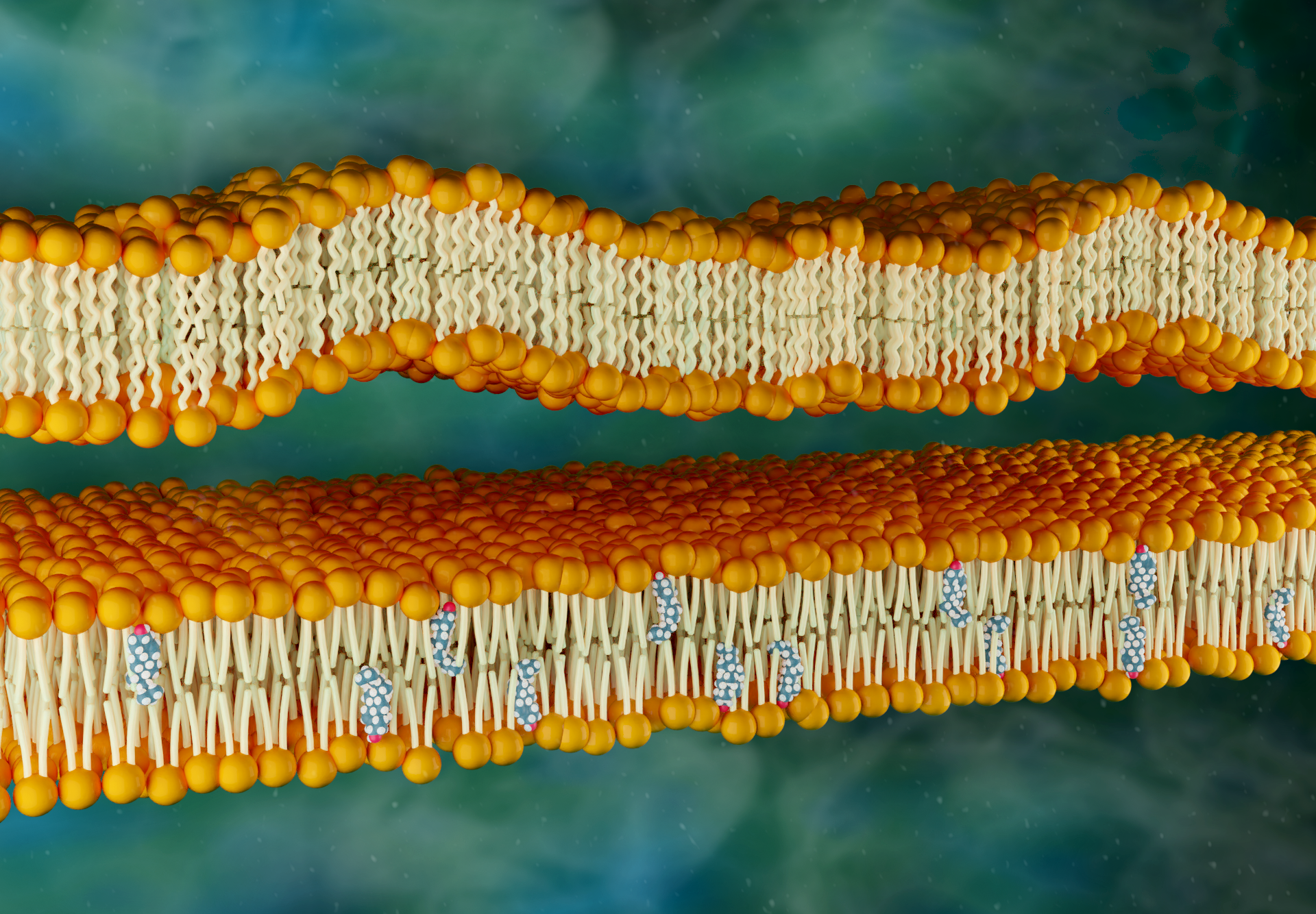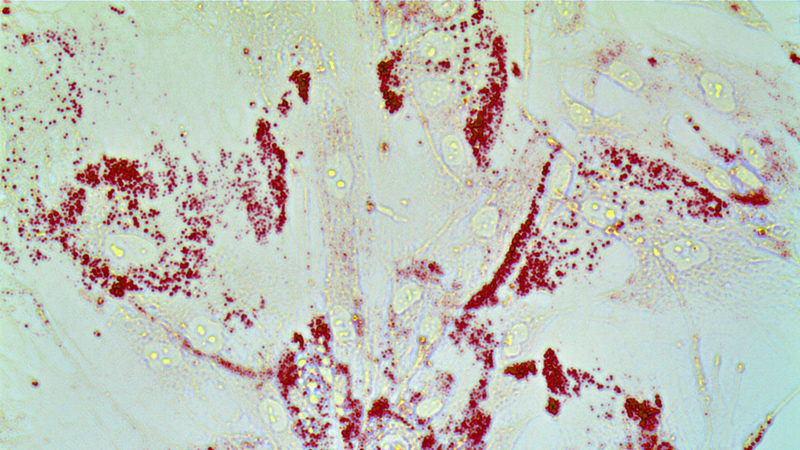Article title: Decreased skeletal muscle intramyocellular lipid droplet-mitochondrial contact contributes to myosteatosis in cancer cachexia Authors: Thomas D. Cardaci, Brandon N. VanderVeen, Alexander R. Huss, Brooke M. Bullard, Kandy T. Velazquez, Norma Frizzell, James A. Carson, Robert L. Price, E.…
Tag: Lipid
Overlooked lipid connected to ancient cellular pathway with links to cancer
Brooke Emerling, Ph.D., co-director of, and associate professor in, the Cancer Metabolism and Microenvironment Program at Sanford Burnham Prebys, is contributing to a revival of interest in an underappreciated set of enzymes called phosphatidylinositol-5-phosphate 4-kinases (PI5P4Ks).
Protein Accumulation on Fat Droplets Implicated in Late-Onset Alzheimer’s Disease
In an effort five years in the making, UNC School of Medicine cell biologist Sarah Cohen, PhD, and Rockefeller University’s Ian Windham, PhD, describe the interplay between fats and proteins in brain cells and how their dysfunction contributes to the development of late-onset Alzheimer’s disease.
Patients With Specific Types of Lipids May Be at Higher Risk of Developing Blinding Eye Disease
Principal Investigator: Louis R. Pasquale, MD, FARVO, Deputy Chair for Ophthalmology Research for the Mount Sinai Health System Co-First Authors: Oana A. Zeleznik, PhD, Instructor in Medicine at Brigham and Women’s Hospital and Jae H. Kang, ScD, Assistant Professor of…
Harnessing good fats to relieve MS symptoms
Researchers find that fish oil derivative reduces and delays disease–causing inflammation in mouse model of multiple sclerosis
The Medical Minute: Never had a lipid panel? Here’s why it’s important
Know your numbers? A Penn State Health cardiologist says a lipid panel can help you stave off a heart attack.
Nationally representative study shows disparities persist in lipid control
Physician-scientists assessed whether lipid concentrations and rates of lipid control changed among U.S. adults from 2007 to 2018. The researchers observed that while mean cholesterol concentrations improved among U.S. adults overall during this time period, there were concerning variations in these trends by race and ethnicity.
Brain Cell Membranes’ Lipids May Play Big Role in Alzheimer’s Progression
Links between lipid imbalance and disease have been established, in which lipid changes increase the formation of amyloid plaques, a hallmark of Alzheimer’s disease. This imbalance inspired researchers to explore the role of lipids comprising the cellular membranes of brain cells. In Biointerphases, the researchers report on the significant role lipids may play in regulating C99, a protein within the amyloid pathway, and disease progression.
Journal of Lipid Research names new junior associate editors
The program, now in its second year, was created to achieve two chief goals: demystify the peer-review process and train the next generation of journal leaders. Each junior associate editor will serve a two-year term.
A Novel Monoclonal Antibody Therapy Cuts LDL Cholesterol by Half in a High-Risk Patient Population, Study Shows
The investigational drug evinacumab reduced low-density lipoprotein (LDL) cholesterol—the so-called “bad” cholesterol—by 50 percent in patients with severe hypercholesterolemia whose condition is resistant to standard treatments, a phase 2 study from the Icahn School of Medicine of Mount Sinai and other global academic sites has found.
Adults with endocrine disorders have an increased risk of heart disease
All adults with endocrine disorders should be tested for high cholesterol and triglycerides to evaluate their risk of heart attack or stroke, according to a Clinical Practice Guideline issued today by the Endocrine Society.

Study: Turning a coronavirus protein into a nanoparticle could be key to an effective COVID-19 vaccine
One of the proteins on the virus – located on the characteristic COVID spike – has a component called the receptor-binding domain, or RBD, which is its “Achilles heel.” That is, he said, antibodies against this part of the virus have the potential to the neutralize the virus.

Neutrons reveal behavior of cholesterol in membranes
Neutron scattering at the Department of Energy’s Oak Ridge National Laboratory has shown that cholesterol stiffens simple lipid membranes, a finding that may help us better understand the functioning of human cells.

Loss of Lipid-Regulating Gene Fuels Prostate Cancer Spread
Johns Hopkins Kimmel Cancer Center researchers from the Department of Radiation Oncology and Molecular Radiation Sciences identified a lipid-regulating protein that conveys what the researchers describe as “superpowers” onto prostate cancer cells, causing them to aggressively spread.